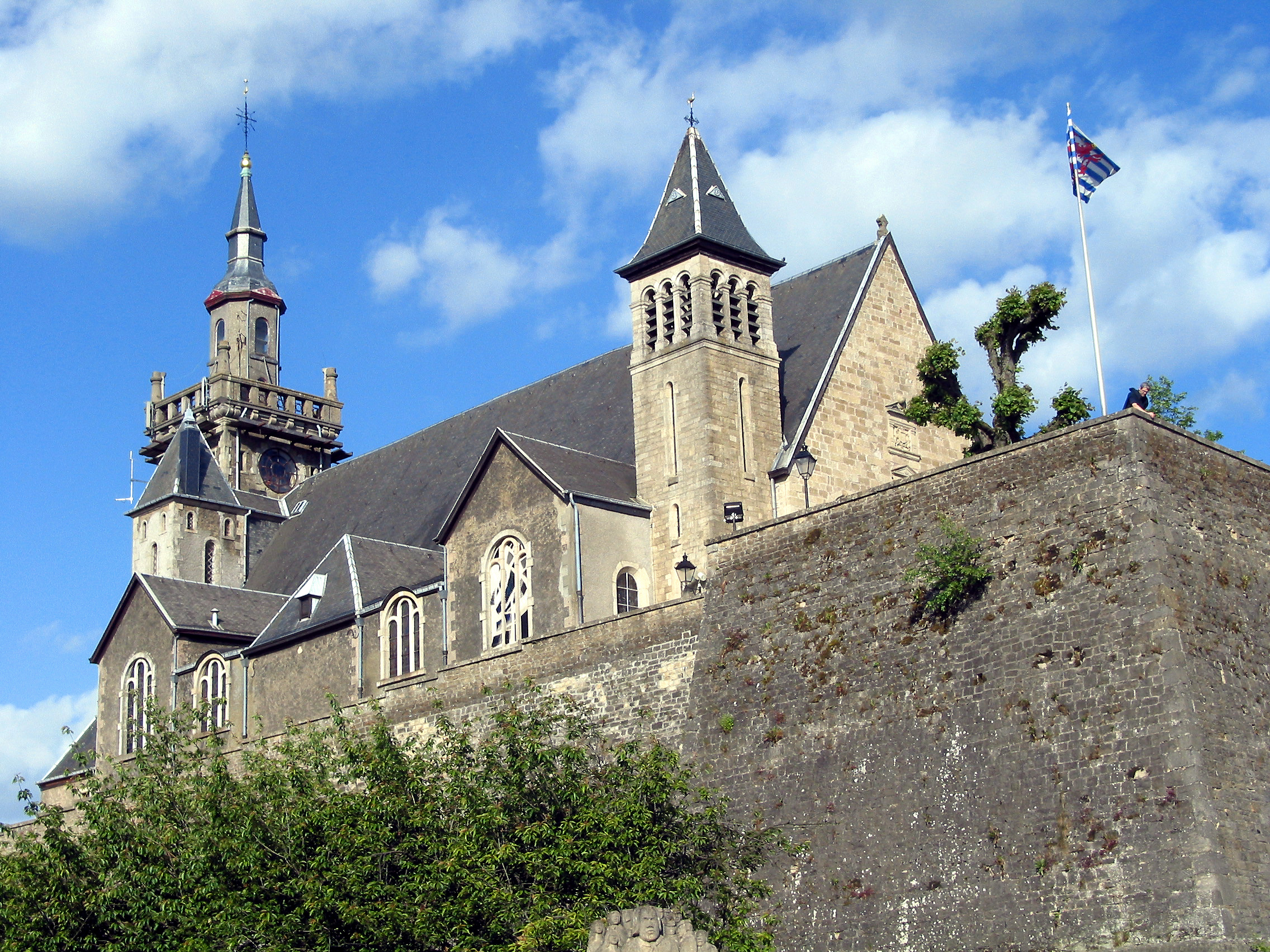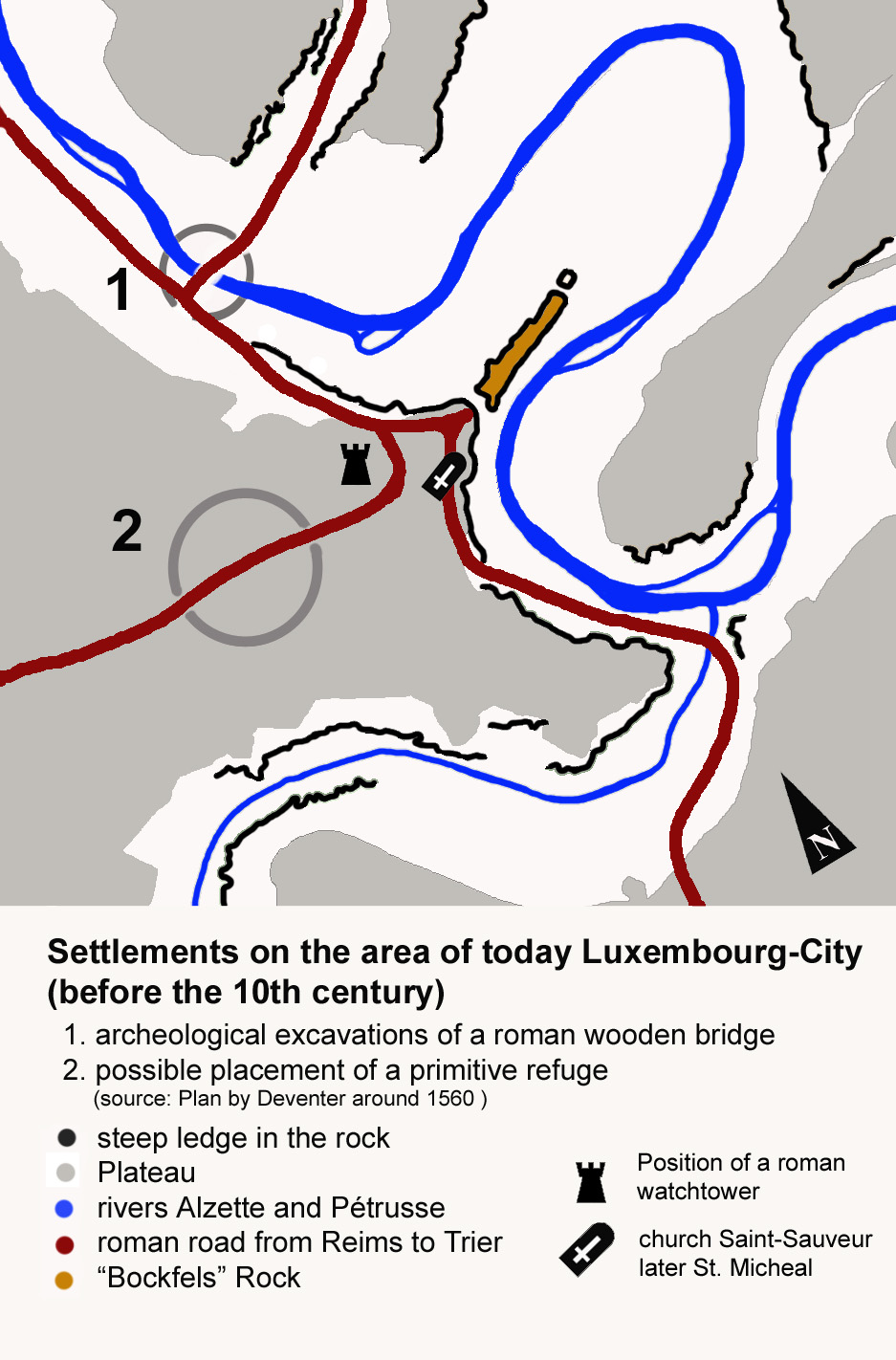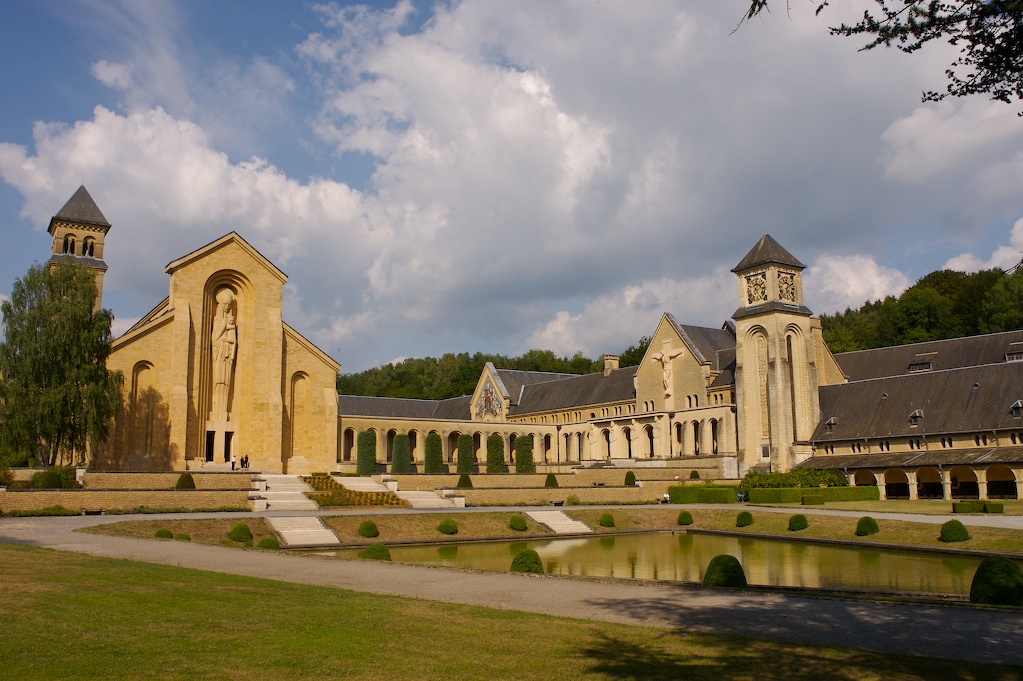|
Neufchâteau, Luxembourg Province
Neufchâteau (; ) is a City status in Belgium, city and Municipalities in Belgium, municipality of Wallonia located in the Luxembourg (Belgium), province of Luxembourg, Belgium. On 1 January 2018 the municipality, which covers , had 7,679 inhabitants, giving a population density of . The municipality consists of the following districts: Grandvoir, Grapfontaine, Hamipré, Longlier, Neufchâteau, and Tournay, Wallonia, Tournay. Other localities are: Cousteumont, Fineuse, Gérimont, Harfontaine, Hosseuse, Lahérie, LeSart, Malome, Marbay, Massul, Molinfaing, MonIdée, Montplainchamps, Morival, Namoussart, Nolinfaing, Offaing, Petitvoir, Respelt, Semel, Tronquoy, Verlaine, and Warmifontaine. History Early history A Neolithic megalith dating from about 2000 BC and a Celtic necropolis dating from between the 5th and 2nd centuries BC have been found in this area, attesting to early human activity. Gallo-Roman sepultures and a small Ancient Rome, Roman villa were found here as well, s ... [...More Info...] [...Related Items...] OR: [Wikipedia] [Google] [Baidu] |
Arrondissement Of Neufchâteau (Belgium)
Arrondissement of Neufchâteau may refer to: * Arrondissement of Neufchâteau, Belgium, an arrondissement in the Province of Luxembourg in Belgium * Arrondissement of Neufchâteau, Vosges, an arrondissement in the Vosges department in France {{disambig ... [...More Info...] [...Related Items...] OR: [Wikipedia] [Google] [Baidu] |
Gallo-Roman
Gallo-Roman culture was a consequence of the Romanization (cultural), Romanization of Gauls under the rule of the Roman Empire in Roman Gaul. It was characterized by the Gaulish adoption or adaptation of Roman culture, Roman culture, language, morals and way of life in a uniquely Gaulish context. The well-studied meld of cultures in Gaul gives historians a model against which to compare and contrast parallel developments of Romanization in other less-studied Roman provinces. ''Interpretatio romana'' offered Roman names for Gaulish religion, Gaulish deities such as the smith-god Gobannus; however, of the Celtic deities, only the horse-patroness Epona penetrated Romanized cultures beyond the confines of Gaul. The Migration Period, barbarian invasions began in the late 3rd century and forced upon Gallo-Roman culture fundamental changes in politics, economic underpinning and military organization. The Visigothic Kingdom, Gothic settlement of 418 offered a double loyalty, as Weste ... [...More Info...] [...Related Items...] OR: [Wikipedia] [Google] [Baidu] |
Albert Claude
Albert Claude (; 24 August 1899 – 22 May 1983) was a Belgian- American cell biologist and medical doctor who shared the Nobel Prize in Physiology or Medicine in 1974 with Christian de Duve and George Emil Palade. His elementary education started in a comprehensive primary school at Longlier, his birthplace. He served in the British Intelligence Service during the First World War, and got imprisoned in concentration camps twice. In recognition of his service, he was granted enrolment at the University of Liège in Belgium to study medicine without any formal education required for the course. He earned his Doctor of Medicine degree in 1928. Devoted to medical research, he initially joined German institutes in Berlin. In 1929 he found an opportunity to join the Rockefeller Institute in New York. At Rockefeller University he made his most groundbreaking achievements in cell biology. In 1930 he developed the technique of cell fractionation, by which he discovered the agent of t ... [...More Info...] [...Related Items...] OR: [Wikipedia] [Google] [Baidu] |
Von Blumenthal
The Blumenthal family is a Lutheran and Roman Catholic German noble family, originally from Brandenburg-Prussia. Other (unrelated) families of this name exist in Switzerland and formerly in Russia, and many unrelated families (quite a few of them Jewish) called Blumenthal, without "von", are to be found worldwide. The family was already noble from earliest times (''Uradel''), dating from the days of the Holy Roman Empire in the Middle Ages, long before the creation of the Kingdom of Prussia and the German Empire, and different branches acquired different titles over time. All living members of the noble family are descended from Heinrich (V) von Blumenthal (1654–93), whose baronial status was limited to the borders of Brandenburg. Other members of the family were raised to allodial baronies (''Freiherren''), all of which are now extinct, or to countships, of which only one line survives. One member of the family, Georg (I) was a Prince-Bishop (i.e. a head of state). In the ca ... [...More Info...] [...Related Items...] OR: [Wikipedia] [Google] [Baidu] |
World War I
World War I or the First World War (28 July 1914 – 11 November 1918), also known as the Great War, was a World war, global conflict between two coalitions: the Allies of World War I, Allies (or Entente) and the Central Powers. Fighting took place mainly in European theatre of World War I, Europe and the Middle Eastern theatre of World War I, Middle East, as well as in parts of African theatre of World War I, Africa and the Asian and Pacific theatre of World War I, Asia-Pacific, and in Europe was characterised by trench warfare; the widespread use of Artillery of World War I, artillery, machine guns, and Chemical weapons in World War I, chemical weapons (gas); and the introductions of Tanks in World War I, tanks and Aviation in World War I, aircraft. World War I was one of the List of wars by death toll, deadliest conflicts in history, resulting in an estimated World War I casualties, 10 million military dead and more than 20 million wounded, plus some 10 million civilian de ... [...More Info...] [...Related Items...] OR: [Wikipedia] [Google] [Baidu] |
Forêts
Forêts () was a department of the French First Republic, and later the First French Empire, in present-day Belgium, Luxembourg, and Germany. Its name, meaning 'forests', comes from the Ardennes forests. It was formed on 24 October 1795, after the Austrian Netherlands had been annexed by France on 1 October. Before annexation, the territory was part of the Duchy of Luxembourg and small parts of the Duchy of Bouillon. Its capital was Luxembourg City. 14,176 men from the former Duchy of Luxembourg were conscripted into the French Revolutionary Army and the Grande Armée in these years, of whom 9,809 died on the battlefields of Europe.Feitler, Edouard. ''Luxemburg deine Heimatstadt'', p. 206 After Napoleon was defeated in 1814, most of Forêts became part of the Grand Duchy of Luxembourg (in a personal union with the United Kingdom of the Netherlands); the part on the east side of the rivers Our and Sauer became part of the Prussian Grand Duchy of the Lower Rhine, which was suc ... [...More Info...] [...Related Items...] OR: [Wikipedia] [Google] [Baidu] |
Louis XIV
LouisXIV (Louis-Dieudonné; 5 September 16381 September 1715), also known as Louis the Great () or the Sun King (), was King of France from 1643 until his death in 1715. His verified reign of 72 years and 110 days is the List of longest-reigning monarchs, longest of any monarch in history. An emblem of the Absolutism (European history), age of absolutism in Europe, Louis XIV's legacy includes French colonial empire, French colonial expansion, the conclusion of the Thirty Years' War involving the Habsburgs, and a controlling influence on the Académie royale de peinture et de sculpture, style of fine arts and architecture in France, including the transformation of the Palace of Versailles into a center of royal power and politics. Louis XIV's pageantry and opulence helped define the French Baroque architecture, French Baroque style of art and architecture and promoted his image as absolute ruler of France in the early modern period. Louis XIV began his personal rule of France ... [...More Info...] [...Related Items...] OR: [Wikipedia] [Google] [Baidu] |
Arlon
Arlon (; ; ; ) is a City status in Belgium, city and Municipalities in Belgium, municipality of Wallonia, and the capital of the Luxembourg (Belgium), province of Luxembourg in the Ardennes, Belgium. With a population of just over 28,000, it is the smallest provincial capital in Belgium. Arlon is also the capital of its cultural region: the Arelerland (Land of Arlon in Luxembourgish). The municipality consists of the following deelgemeente, sub-municipalities: Arlon proper, Autelbas, Bonnert, Guirsch, Heinsch, Belgium, Heinsch, and Toernich. Other population centers include: Autelhaut, Clairefontaine, Fouches, Belgium, Fouches, Frassem, Freylange, Hachy, Belgium, Hachy, Heckbous, Rosenberg, Sampont, Schoppach, Sesselich, Seymerich, Stehnen, Sterpenich, Stockem, Udange, Belgium, Udange, Viville, Waltzing, Weyler, and Wolberg. History Origins Before the Ancient Rome, Roman conquests of Gaul, the territory of Arlon and a vast area to the southeast were settled by the Treve ... [...More Info...] [...Related Items...] OR: [Wikipedia] [Google] [Baidu] |
Duchy Of Luxembourg
The Duchy of Luxembourg (; ; ; ) was a Imperial state, state of the Holy Roman Empire, the ancestral homeland of the noble House of Luxembourg. The House of Luxembourg became one of the most important political forces in the 14th century, competing against the House of Habsburg for supremacy in Central Europe. They would be the heirs to the Přemyslid dynasty in the Kingdom of Bohemia, succeeding to the Kingdom of Hungary and contributing four Holy Roman Emperors until their own line of male heirs came to an end and the House of Habsburg received the territories that the two Houses had originally agreed upon in the Treaty of Brünn in 1364. In 1443, the duchy passed to Duke Philip the Good of Burgundy of the French House of Valois-Burgundy, House of Valois, and, in 1477, by marriage to Archduke Maximilian I of Austria of the House of Habsburg. The Seventeen Provinces of the former Burgundian Netherlands were formed into an integral union by Charles V, Holy Roman Emperor in the ... [...More Info...] [...Related Items...] OR: [Wikipedia] [Google] [Baidu] |
Orval Abbey
Orval Abbey (Abbaye Notre-Dame d'Orval) is a Cistercian monastery founded in 1132 in the Gaume region of Belgium, located in Villers-devant-Orval, part of Florenville, Wallonia in the province of Luxembourg. The abbey is well known for its history and spiritual life but also for its local production of the Trappist beer Orval and a specific cheese. History First foundation The site has been occupied since the Merovingian period, and there is evidence that there was already a chapel here in the 10th century. Around 1070, a group of Benedictine monks from Calabria settled here, at the invitation of Arnold I, Count of Chiny, and Conrad I, Count of Luxembourg, and began construction of a church and a monastery, but after some forty years, possibly because of the death of Count Arnould, they moved away again. They were replaced by a community of Canons Regular, [...More Info...] [...Related Items...] OR: [Wikipedia] [Google] [Baidu] |
Saint-Hubert, Belgium
Saint-Hubert (; ) is a city and municipality of Wallonia located in the province of Luxembourg, Belgium. On 1 January 2007 the municipality, which covers 111.16 km2 (42.92 sq mi), had 5,737 inhabitants, giving a population density of 51.6 inhabitants per square kilometre. The municipality consists of the following districts: Arville, Awenne, Hatrival, Mirwart, Saint-Hubert, and Vesqueville. Other population centers include: Lorcy and Poix-Saint-Hubert. The town is named in commemoration of Saint Hubert of Liège, whose body was moved in 825 to the Benedictine Abbey of Andage, thereafter called Abbey of Saint-Hubert. Climate Gallery Belgique - Basilique de Saint-Hubert - 01.jpg, Basilica of Saint-Hubert Belgique - Basilique de Saint-Hubert - 02.jpg, Cenotaph of Hubert of Liège Hubert of Liège (Latinisation of names, Latinized: ''Hubertus'') ( 656 – 30 May 727 A.D.) was a Christian saint who became the first bishop of Liège in 708 A.D. He is a pa ... [...More Info...] [...Related Items...] OR: [Wikipedia] [Google] [Baidu] |





